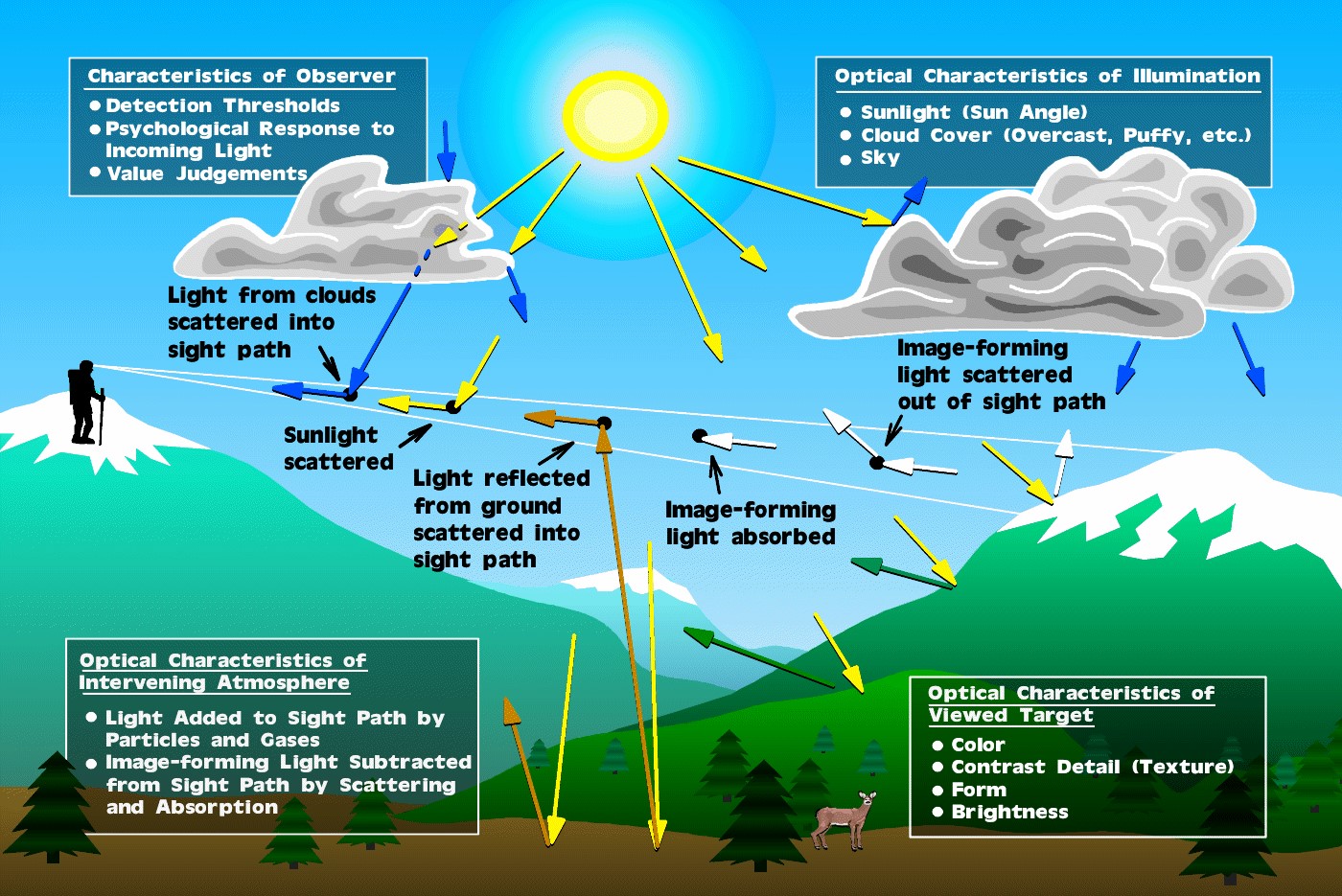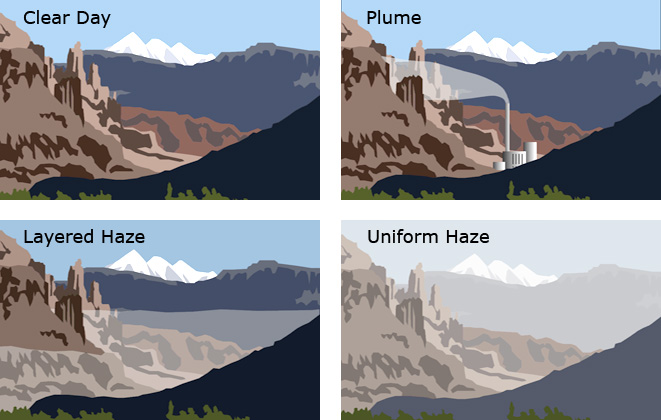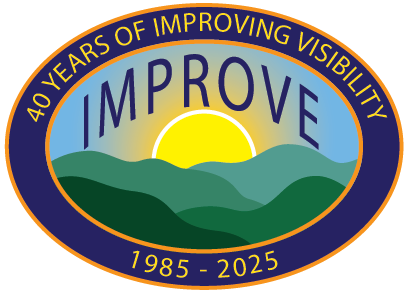Visibility Basics
Visibility is a measure of how well an observer can view a scene. This includes how far one can see in the atmosphere as well as the ability to see the textures and colors of the scene. Many visitors come to National Parks and Wilderness Areas to enjoy the spectacular vistas. Unfortunately, these views are sometimes obscured by haze, which consists of fine particles and gaseous air pollution in the atmosphere. Although haze does occur naturally, due to things such as dust and wildfire smoke, it is primarily caused by air pollution from anthropogenic sources. Haze impacts visibility by scattering and absorbing light in the atmosphere; the processes which impact visibility are summarized in the schematic. Haze can affect how far we can see, and how well we are able to see the colors, forms, and textures of a scenic vista.

Image-forming information from an object is reduced as it passes through the atmosphere to the human observer. Light is also added to the sight path by scattering processes. Some of this scattered light remains in the sight path, and at times it can become so bright that the image essentially disappears. A final important factor in seeing and appreciating a scenic vista are the characteristics of the human observer (Figure taken from Malm, 1999).
Haze can be seen as a plume, layered haze, or uniform haze when present. A plume is characterized by a tight, vertically constrained layer of air pollution coming from a point source (such as a smoke stack). Layered haze is any confined layer of pollutants that creates a visible contrast between that layer and the sky or landscape behind it. Plumes and layered haze are more common during cold winter months when the atmosphere is more stagnant. In an unstable atmosphere, plumes and layers mix with the surrounding atmosphere creating a uniform haze or overall reduction in air clarity.

Types of haze include plumes, layered haze, and uniform haze.
Visibility involves both the physical interaction of light with gases and particles, as well as the psychophysical processes and concurrent value judgments of visual impacts by the human observers. As such, it is difficult to quantify with a single metric, and so a number of metrics are used for quantifying visibility. Perhaps the most intuitive measure of visibility is Visual Range (V.R.), or the greatest distance that an observer can see a black object viewed against the horizon sky. Without the effects of pollution, a natural visual range is approximately 140 miles in the west and 90 miles in the Eastern US. Light extinction (bext) is another measure of visibility; it is the attenuation of light due to scattering and absorption as it passes through a medium. Light extinction has the advantage that it can be directly related to gaseous and aerosol concentrations. However, light extinction is non-linearly related to a person’s perception of changes in haze. To overcome this limitation, visibility can also be measured in Deciview (DV), a unitless metric of haze proportional to the logarithm of bext. The advantage of the DV metric is that, under many circumstances, a change in one deciview will be perceived to be the same on clear and hazy days. Calculations for each of these metrics are shown under Data Resources.
Learn More: Introduction To Visibility by Bill Malm (pdf)

